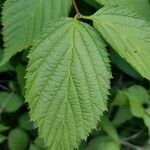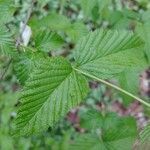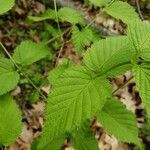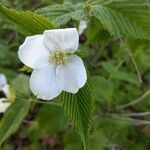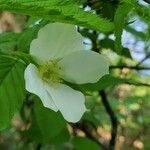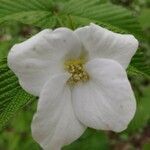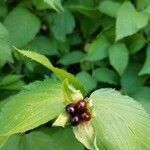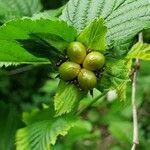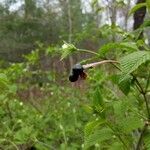Shrubs 0.5–2(3) m tall. Branchlets green when young, later brown, glabrous. Stipules pilose; petiole 2–5 mm, pilose; leaf blade 4–11 × 3–6 cm, abaxially sericeous when young, sparsely pilose on veins when old, adaxially pilose when young, glabrescent later, base rounded to subcordate, apex acuminate. Flowers 3–5 cm in diam. Sepals ovate-elliptic, sparsely sericeous distally, apex acute; epicalyx segments linear, 1/5–1/4 as long as sepals. Petals obovate, 1/4–1/3 as long as sepals. Drupes 1–4, brownish black, obliquely ellipsoid, ca. 8 mm. Fl. Apr–May, fr. Jun–Sep. 2n = 18.
